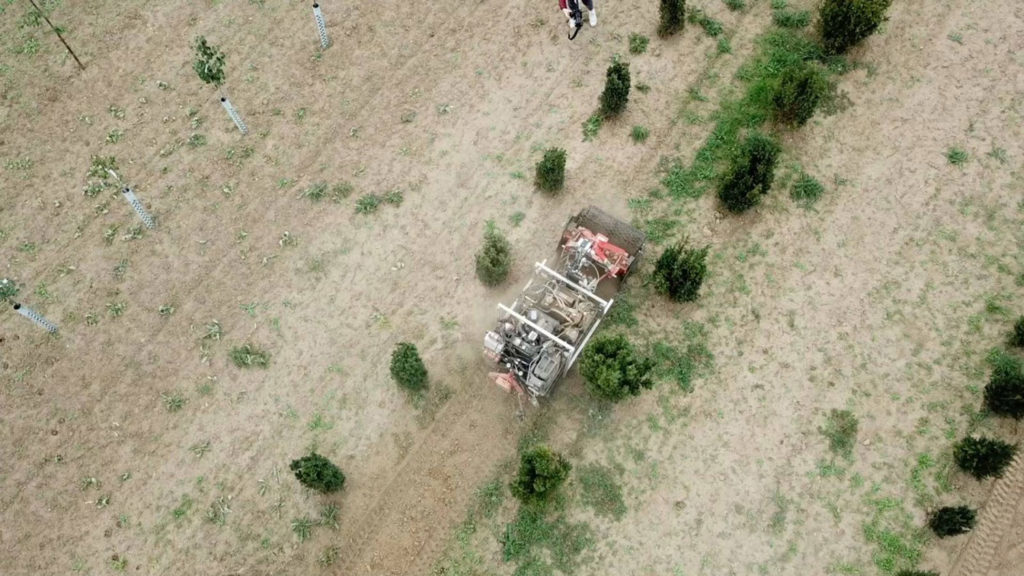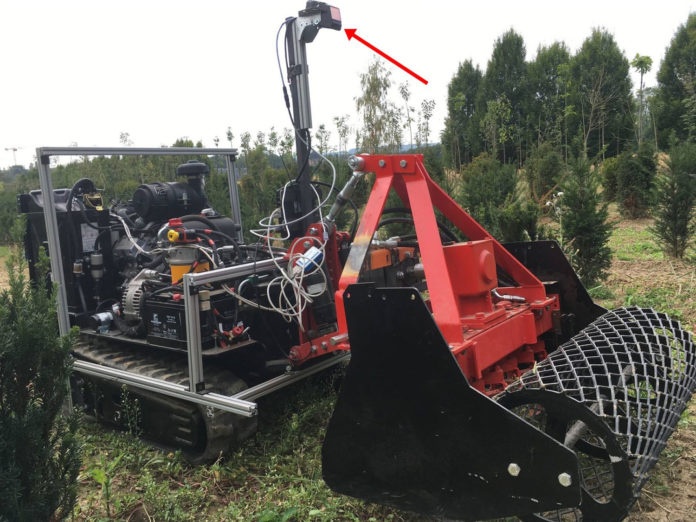Weeds are a real nuisance in tree nurseries, vegetable gardens, or orchards. Removing weeds is a very relevant topic and one that is rather complex. Especially in the early stages of crop growth, weeds compete with crops for light, water, and nutrients. Removal by manual hoeing is labor-intensive, and the use of harmful herbicides is undesirable as they pollute the environment.
Now, the Fraunhofer Institute for Manufacturing Engineering and Automation IPA in Stuttgart has collaborated with partners to develop a mobile AMU-Bot robot system that reliably removes weeds in a cost-effective and environmentally friendly manner.
The autonomous caterpillar vehicle, AMU-Bot (“AMU” being short for “autonomous mechanical weed control” in German), drives between the rows of trees in the tree nursery and removes the weeds using rotary harrows. The rotating blades are attached to a height-adjustable manipulator. At the end of the row of trees, the caterpillar vehicle turns around and autonomously starts on the next row.

The robot navigates using sensors and removes weeds mechanically without the need for chemicals. The LiDAR (light detection and ranging) scanners installed in the weed killer continuously emit laser pulses as the vehicle moves, which are then reflected by objects in the surrounding area. This produces a 3D point cloud of the environment, which helps mobile weed killers to find their way and determine the position of plants or trees. “AMU-Bot is not yet able to classify all plants; however, it can recognize crops such as trees and shrubs in the rows of the tree nursery cultivations,” said the team leader Kevin Bregler.
The weeds in the spaces between the plants or trees are also reliably eliminated. To do this, the manipulator moves into the gaps between the crops. The weeds do not need to be collected separately and are left on the ground to dry out. Thanks to its caterpillar drive, the self-driving weed killer moves along the ground with ease and is extremely stable. Even holes in the ground created when saplings are removed do not pose a problem for AMU-Bot. The AMU-Bot platform is economical, robust, easy to use, and at the same time highly efficient.
The project is funded by the German Federal Office of Agriculture and Food. The AMU-Bot platform relies on the ingenious interaction of three sophisticated modules: caterpillar vehicle, navigation system, and manipulator. Bosch is responsible for the navigation and the sensor system, while KommTek developed the caterpillar drive. The Fraunhofer IPA designed the height-adjustable manipulator, including rotary harrows, and was responsible for overall coordination.
